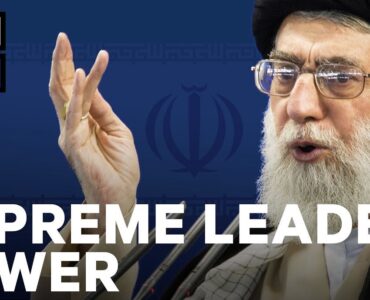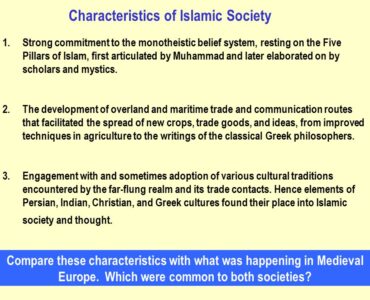
Trade
Three complications arise in assessing trade by Islamic countries in the modern period. First, the identification of countries as Islamic is a recent development, dating back to the establishment of the Organization of the Islamic Conference (OIC) in 1969. Second, there is a dearth of data on Islamic countries for most of the modern period. Third, until the mid-twentieth century most of the Islamic countries were under the direct or indirect influence of non-Islamic foreign powers. The Arab countries were part of the Ottoman Empire before they came under Western, non-Islamic influence in the early nineteenth century. Pakistan was a part of the Indian Subcontinent ruled by Britain until after World War II. Indonesia was under Dutch influence, and France ruled Algeria from 1832 to 1962. A similar fate characterized the histories of most of uhthe other OIC members.
In addition to having a lasting impact on the economic and trade policies of Islamic countries, Western influence has had two important results. First, data relating to the present national boundaries of OIC members are recent in origin. Second, the trade policy of these countries was rarely influenced by Islamic thought or principles. Trade policy in the Ottoman period, for example, was influenced by capitulation agreements and colonial interests, which tended to undermine Ottoman authority and Islamic rules.
The capitulations were agreements that awarded concessions to citizens of Western, non-Islamic countries trading or residing within the Ottoman Empire. These concessions protected foreigners against discrimination or restrictions arising from the Islamic civil laws of the empire. The agreements also gave Westerners more freedom of trade and travel and better terms of trade than those enjoyed by natives of the empire. For example, export duties paid by natives were higher than import duties, which proved advantageous for foreigners. These benefits were sometimes extended to native residents who were non-Muslim and had a religious affinity with a particular foreign power. Thus, Catholics enjoyed the protection of France and the Vatican; Protestants, Britain; and Orthodox Christians, Russia. As a result, Greeks, Armenians, Lebanese and Syrian Christians, Egyptian Copts, and similar minorities, such as British, French, and Italian residents, were predominant in both foreign trade and the commerce of the Islamic countries in which they resided.
The direction and composition of trade were little affected by Islam and were evidently determined by economic complementarity rather than by the religious identity or doctrine of the trading parties. The impact of colonialism on trade was best demonstrated by the high percentage of trade with non-Islamic foreign countries. Islamic countries traded mostly with the colonial powers to which they were subjected, in compliance with the interests of the dominant countries. This situation continues to this day.

This pattern of trade was reinforced by the economic underdevelopment and poverty of the Islamic countries and by the relatively low complementarity among Islamic economies. Trade with non-Islamic Western countries was based on exchanging primary and natural products for manufactured goods that Islamic countries did not produce. Ottoman trade with Europe and the United States constituted 93 percent of all exports and imports in the late nineteenth century. Exports from Islamic countries included wheat, barley, fruits, hides, silks, and other raw material. Imports centered on processed and manufactured goods and machinery.
A number of modifications in trade policy have been enacted since the end of World War II, but little has been done to influence the direction and composition of trade among the Islamic countries or between them and the more developed countries. Nationalism characterized most countries that gained their independence after foreign rule. The OIC came into being and now has fifty-seven member countries. Islamic banking developed in a number of countries, and trade regionalism became a mechanism for cooperation, but nothing among the Islamic countries or the Arab states has been successful enough to make a difference. The most recent change in trade policy has been the campaign to advance globalization and free markets, which favor the industrial countries and penalize the underdeveloped OIC countries. Although trade in most OIC countries grew faster than it did in the industrial countries, the pattern of trade hardly changed. A brief study of the twenty-eight member OIC countries with ten million people or more, totaling 1.5 billion people, show the following: Annual exports to industrial countries predominated (more than fifty percent of the total) in sixteen to twenty countries in the period 1996–2005. Exports to developing countries predominated in eleven to sixteen countries, with a tendency for that number to rise in the later years. In contrast, imports from industrial countries predominated in ten to sixteen countries, with a tendency for that number to decline in the later years.
The composition of the trade basket has also remained relatively stable over the last decade. Twenty-six of the twenty-eight OIC member countries studied illustrate that pattern clearly: Exports of primary goods were more than fifty percent of the total in seventeen or eighteen countries between the years 1995 and 2005. Imports of primary goods exceeded fifty percent of the total in twelve to fourteen of those countries. In other words, the Islamic countries still produced largely primary goods with little industrial or technological content. There are several reasons for this pattern: poverty, underdevelopment, tradition, and lack of access to development financing. Most of the OIC countries are behind in technological development and have low per capita income. They are linked to certain industrial countries by their colonial history and tradition, and they have relatively easier access to finance trade than to develop industry.
Major task forces have been created, and many recommendations have been made to promote economic cooperation and trade among Islamic countries. However, intra-Islamic trade has remained relatively small, and the pattern established in pre-independence and pre-OIC times has continued because it has a rationality of its own. It is neither contradictory to Islam nor has it been politically feasible to alter. Its rationality is augmented by the economic conditions within the OIC economies, which include poverty, underdevelopment, and traditional dependence on the highly developed non-Islamic countries of the West with which they share a high degree of complementarity. The OIC has tried to promote complementarity and trade by establishing the Islamic Chamber of Commerce; the fruits are yet to come. Furthermore, it is evident from the experience of the nineteenth and twentieth centuries that the direction and composition of trade are functions of mechanization, industrialization, and specialization, all of which are still rare in the Islamic countries. Even where there have been major changes, as in Dubai, the modernization has been implemented by foreign human capital and not by the native people.
Trade
410 – 006
https://discerning-Islam.org
Last Update: 02/2021




